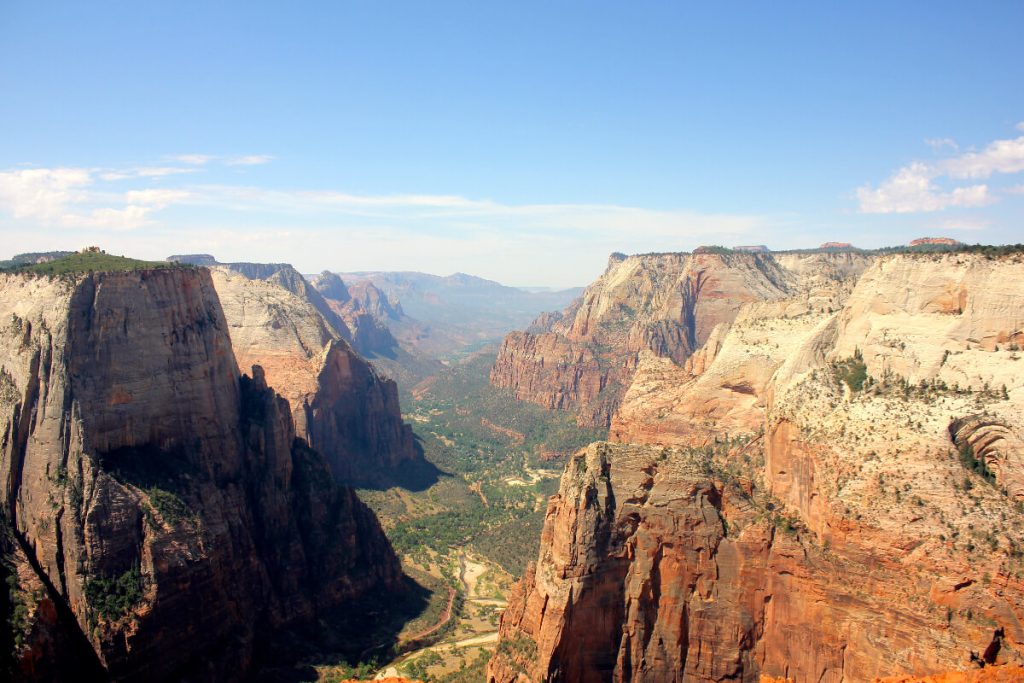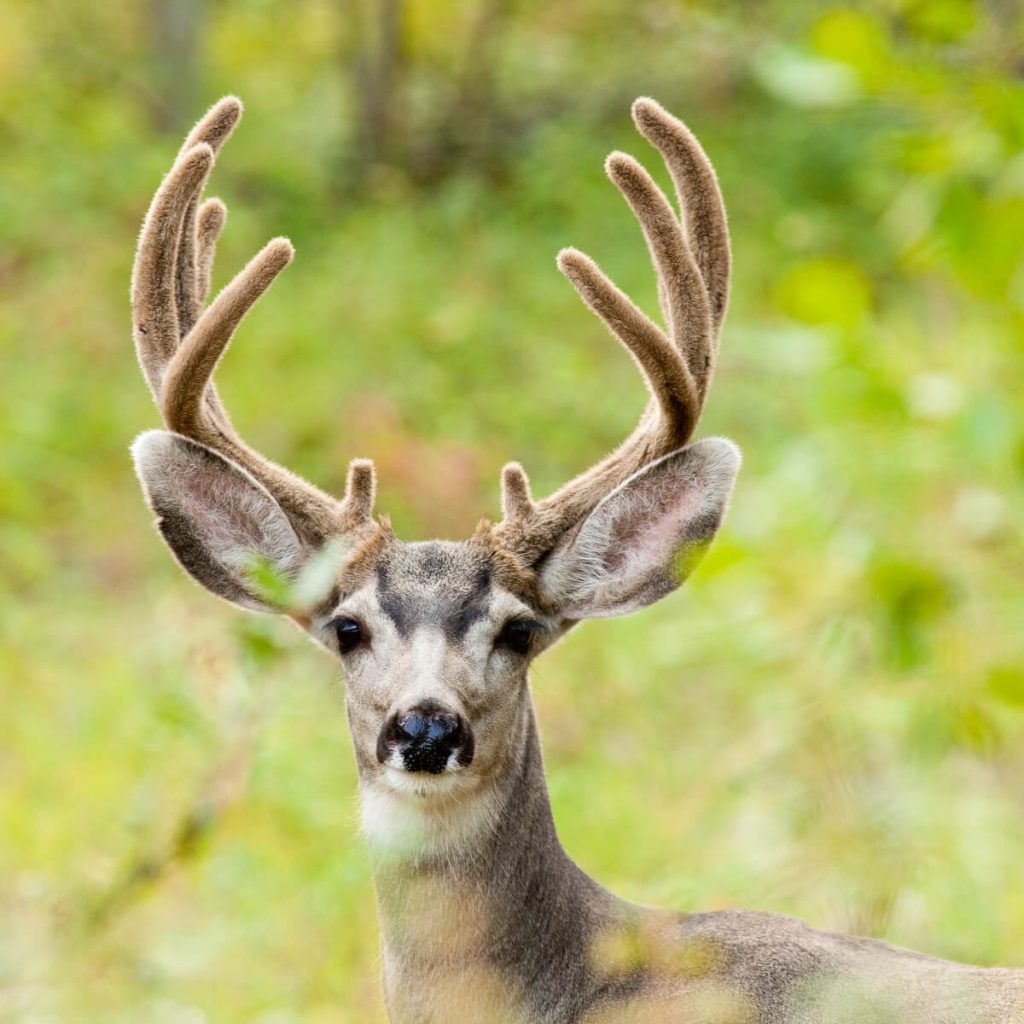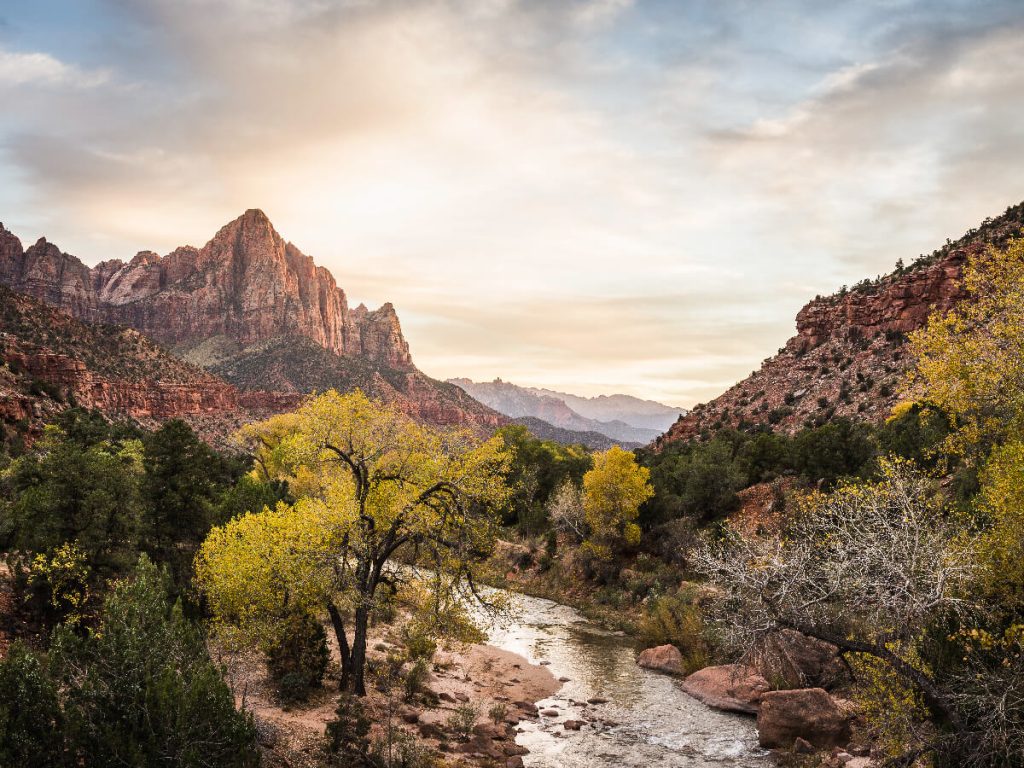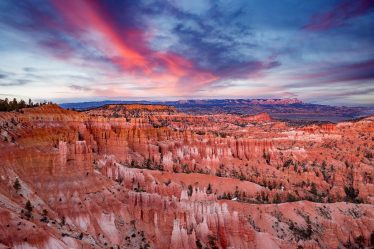
Welcome to a journey to one of the most spectacular national parks in the United States – Zion! Located in southwestern Utah, this stunning national park is one of the most unique places in the world. Known for its dazzling views, incredible rock formations, and picturesque trails through deep canyons, Zion is a true paradise for outdoor adventure enthusiasts. In this article, we will discover the fascinating world of Zion, its incredible attractions, and why it is one of the most important travel destinations for anyone who loves the beauty of nature and wants to experience it in all its glory. Are you ready for an unforgettable journey to heavenly Zion?
Location
Zion National Park is located in the southwestern part of Utah in the United States, in a region known as the Colorado Plateau. It is part of the famous Utah national parks area, known as the „Mighty 5″, which also includes Arches, Bryce Canyon, Canyonlands, and Capitol Reef. Zion is situated in the heart of Zion National Park, which covers an area of over 230 km² and is home to an incredibly diverse flora and fauna. Located about 250 km east of Las Vegas and about 480 km southeast of Salt Lake City, Zion is easily accessible for adventure enthusiasts and nature lovers in one of the most picturesque corners of the United States.
Check out other Mighty 5 National Park – Bryce Canyon.
What to See?

Zion is a real treat for nature lovers and outdoor enthusiasts, offering countless attractions. Here are a few of them worth seeing during your trip to this charming national park:
- Canyons: The heart of the park, which attracts tourists from all over the world. Zion Canyons are spectacular rock formations with towering cliff walls sculpted by years of river erosion. You can admire them on several main trails, such as The Narrows, where you can hike along the Virgin River, or Angels Landing, which offers breathtaking views of the surrounding landscape.
- Weeping Rock: One of the most famous places in Zion, with a characteristic hanging garden where water seeps through the rocks, creating the effect of a „weeping” rock. It is an easily accessible place that offers stunning views of the Zion valley and is an excellent place for a relaxing walk.
- Emerald Pools: A charming series of waterfalls and pools that create a picturesque landscape. You can reach them on one of several trails, such as Lower Emerald Pools, Upper Emerald Pools, and Emerald Pools Trail. It is a great place to rest in the shade of trees and cool off on hot summer days.
- Kolob Canyons: A less-known but incredibly picturesque part of the park located northwest of the main Zion area. Kolob Canyons offers unique rock formations, spectacular views, and less crowded trails, making it an ideal place for those seeking peace and quiet.
- Exciting trails: Zion offers many amazing trails for hiking enthusiasts, from easy walks to challenging hikes into deep canyons. The Narrows, Angel’s Landing, and Observation Point are just some of the popular trails that allow you to discover the beauty of the park up close.
- Park fauna: Zion is also a paradise for nature lovers, as the park is home to a variety of wild animals, such as bighorn sheep, deer, cougars, California condors, and many others. Observing wildlife during hikes through the park can be an unforgettable experience.
These are just some of the many attractions Zion has to offer.
Fun Facts about Zion
Here are some fascinating facts about Zion National Park that can add extra charm to your trip:
- The name „Zion” comes from the first Mormon settlers who arrived in the area in the 19th century. The name refers to the biblical word „Zion,” which means a perfect place or a place of divine protection.
- The Narrows, one of the most famous and spectacular places in Zion, is one of the longest slot canyons for water hiking in the world. The narrow gorge, which can be hiked through, has places where its width is only a few meters, creating unforgettable experiences.
- Zion National Park is one of the oldest national parks in the United States, established in 1919. It is also one of the most popular parks in the country, attracting hundreds of thousands of tourists annually.
- Zion is home to the highest point in Utah – Horse Ranch Mountain, which measures 2660 meters above sea level. The breathtaking view from this peak is a reward for those who brave the challenging climbing trail.
- The park contains many unique rock formations, such as Checkerboard Mesa, which is known for its distinctive grid pattern on the surface of the rocks, or The Three Patriarchs, three mighty rocky peaks named Abraham, Isaac, and Jacob.
- Zion is also a place where you can admire fascinating geological history. The rocks in the park are hundreds of millions of years old and reveal diverse geological layers that shed light on the long history of geological processes that shape this region.
- In Zion, you can also experience extraordinary atmospheric phenomena, such as rainbows, which often appear in the canyons and give the park an even more magical look.
These facts only hint at the richness and uniqueness of Zion National Park. It is a place where nature, history, and culture converge, creating unforgettable experiences for travelers from around the world.
A brief history of Zion National Park
The history of Zion National Park is rich and dates back to prehistoric times. The first people inhabited the area around 8,000 years ago, and evidence of their presence can be found in the form of petroglyphs and other artifacts. Later, in the 19th century, the area was settled by Mormon pioneers who named it „Zion” in reference to the biblical word „Zion” meaning a place of God’s protection. In the early 20th century, the area became popular among tourists, and in 1919 it was designated a national park, becoming one of the oldest national parks in the United States. Since then, Zion National Park has attracted millions of visitors from around the world with its beautiful canyons, unique rock formations, and rich geological and cultural history. Today, it is one of the most popular and beloved destinations to visit in the southwestern United States.
Fauna

Zion National Park is home to a diverse array of wildlife that has adapted to the harsh conditions of the desert environment. Here, you can find mule deer, which are one of the area’s characteristic symbols, as well as bighorn sheep, which are considered one of the most important species in the park. Additionally, you can see colorful birds such as hummingbirds, hawks, and owls, as well as reptiles such as lizards and snakes, which have adapted well to the rocky environment. However, it is worth noting that wildlife in Zion National Park can be difficult to see as these animals are well adapted to living in the wild and may avoid contact with humans. Therefore, it is important to appreciate their presence from a distance, respect their habitats, and follow the rules of the park to protect the wildlife and their habitats.
Flora

The flora in Zion National Park is incredibly diverse and adapted to the difficult conditions of the desert climate. In the park, you can find over 1,000 species of plants, many of which are endemic, meaning they only occur in this specific part of the world. Among them, you can find classic desert plants such as cacti, junipers, and agaves, as well as various grasses and shrubs. A distinctive feature of Zion’s flora is also the trees and shrubs reminiscent of vegetation from more humid areas, such as poplars, willows, maple trees, and cherry trees. One of the most important ecosystems in the park is the maple forest, which creates spectacular landscapes in the autumn season when the leaves of the trees turn beautiful shades of red, orange, and yellow. The richness of the flora in Zion National Park contributes to its unique character and is one of the elements that attract nature lovers from around the world.
How to get there?
Zion National Park is located in the southwest part of the United States, in the state of Utah. The closest airport is in Las Vegas, which is approximately 230 kilometers southwest of the park. From the Las Vegas airport, you can rent a car or use the services of private transportation companies that offer transfers to the park. Another option is to drive by car, but it’s worth noting that the national park is about a 4-hour drive from Salt Lake City and a 2.5-hour drive from Las Vegas. You can also use public transportation – buses run between Las Vegas, Zion National Park, and other cities in the region. During the summer season, there is also the option of getting around the park using free buses that run between important points in the park. Regardless of the mode of transportation, the journey to Zion will provide wonderful experiences and unforgettable views.



